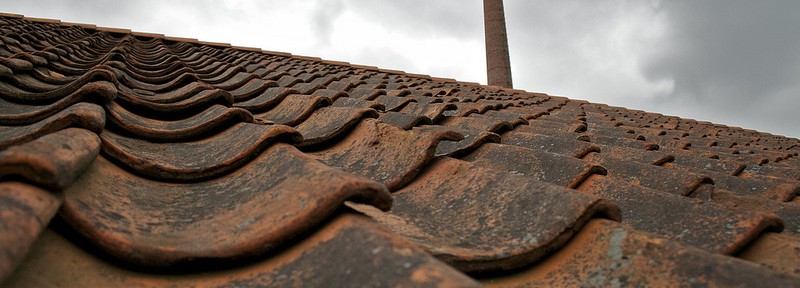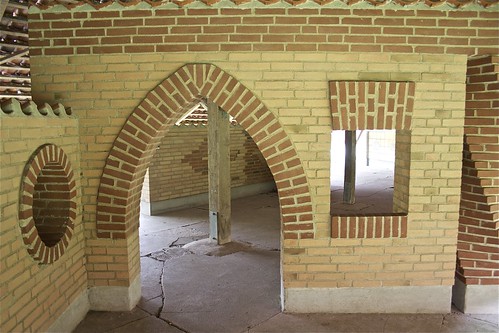In centuries gone by the area around Flensburg Fjord was well-known for its brickworks, or teglværk. In fact, the area had the largest concentration of such facilities in Northern Europe. As time passed these brickworks did not survive the changing times and have mostly disappeared, with only the one in Cathrinesminde left in the region.
As is appropriate, this brickyard has been turned into a museum of industrial history, and in 2007 named one of 25 Danish national industrial monuments. As a museum it showcases not only the history of this specific brickwork, but of the brickworks in the area.
On the technical side of the brickworks the thing that caught my eye is the big brick-making machine in the first hall you enter in the museum. You can get the machine to work with a 10DKK coin. This is more than just payment for the experience of seeing all the parts in motion: the section where the clay is ‘extruded’ into a thin layer, the section where the extruded clay is cut into tiles and, of course, the engine that allows all of this to happen.
Coming from a country without a tradition of brick making – we have a natural stone that is perfect for use as a building material – I was also delighted to see representations of designs that bricks can be built to show: from turning pillars to embossed features and various patterns. I always thought of bricks as a functional object, so this being an industrial museum I was delighted to see this creative aspect of brickworks so prominently.
Within the museum you also have the opportunity to explore the life of the worker related to the museums through a series of workers quarters each set up to represent a specific period during which Cathrinesminde was in operation (1732-1968). In these huts you can observe the changing style in living quarters, the increasing comforts the workers obtained, as well as a details on the cost of rye bread, beer and the working conditions (pay, working hours) of the time.
The worker huts are a bit away from the main museum, making them easy to miss. However, I am glad that the museum attendant pointed them out specifically as worth a visit. It was fascinating to observe the changes from the 1700s to the 1900s, and entertaining to spot items from our grandparents’ houses in the house from the 1960s. We were 2 Maltese an Irish guy and a Dane, and we all recognised an item or another!
This museum highlights both the technical aspects of such brickworks as well as the creative and social aspects related to brickworks. This gives the museum that extra dimension that may often be missing in technically-inclined museums, making this a museum well worth your time in my opinion.




